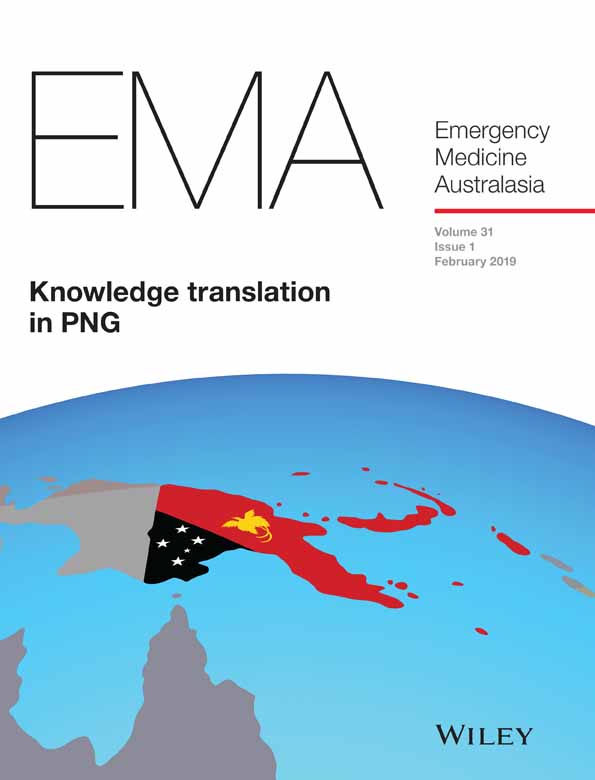Position of the abdominal seat belt sign and its predictive utility for abdominal trauma
Abstract
Objective
In a motor vehicle crash, compressive forces from the lap component of the seat belt may produce an abdominal abrasion/contusion known as the ‘seat belt sign’, and is associated with abdominal and lumbar injuries. Previous research has not taken into account the position of this sign in relation to the anterior superior iliac spine (ASIS). Our aim was to demonstrate an association between the seat belt sign position in relation to ASIS and the presence of abdominal/lumbar injury.
Methods
A mixed prospective and retrospective observational study of patients involved in a motor vehicle crash was conducted. The presence of a seat belt sign was recorded as above ASIS, at/below ASIS, or none. Injury data were extracted from discharge summaries, radiology reports and operation reports. Proportions of patients with injuries were compared across the three groups.
Results
Four hundred and sixty-four participants were enrolled. For participants with a seat belt sign above ASIS, compared to those with no seat belt sign, the positive likelihood ratio for a seat belt related injury was 4.2 (95% CI 2.6–6.8). When the seat belt sign was at/below the level of ASIS the positive likelihood ratio was 1.5 (95% CI 0.4–5.7).
Conclusion
The seat belt sign is associated with abdominal and lumbar injury; however, the location is important. This association is strong when the seat belt sign is above ASIS, but when the sign is at/below the ASIS the injury rate is similar to participants with no seat belt sign. Routine imaging of the abdomen may be appropriate only for those with a seat belt sign above ASIS.




